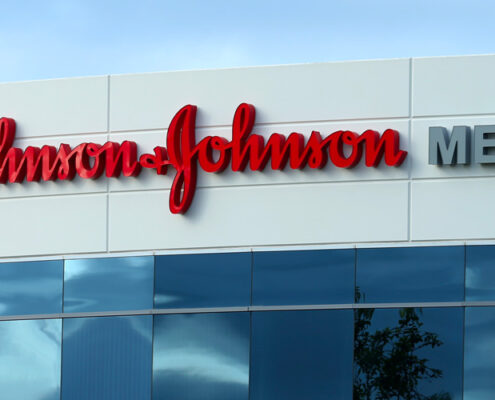EMISSIS MAXWELL ™ CASE STUDY
JOHNSON & JOHNSON INSTALLATION MENTOR BUILDING, IRVING, TX
Pilot Implementation – Mentor Building:
• J&J’s Mentor Building is a single-story, 60,000 sq ft production facility with two 210-ton parallel air-cooled chillers, operating 16/7/365.
Local electricity rates are$0.06 kWh.
The reduction in energy consumption and improve-ment in operating efficiencies achieved with Maxwell™ resulted in:
• An IRR of 45% and a Payback Period of under 3 years Increased operating efficiencies and improved system capacity.
– Allowing J&J to take one chiller off-line for all, or substantially all of the year.
Other highlights of the J&J installation:
• Reduced energy consumption of 4.6 M kWh resulting in a reduction in CO2 emissions of 2,000 tons
• Reduced system flow rates resulting in lower pump-ing power and energy consumption
• Reduced maintenance costs and longer equipment life, extending chiller replacement by 5 years
• Maxwell™ and the results of the installations at Men-tor were presented to J&J’s Global Sustainability Group in Mar ‘22
Johnson & Johnson’s Approach to Climate Action:
s a healthcare company, Johnson & Johnson understands that climate health affects human health. In fact, we’re seeing climate change impact health in new ways by changing infectious disease patterns and increasing the risk of drought and food insecurity. We have taken sustained, long-term action to reduce our greenhouse gas (GHG) emissions, and we are encouraging our suppliers to do the same. We also work with like-minded partners to advance environmental health equity, and we support responsible climate and energy policy around the world.
The latest climate science indicates rising global temperatures must be limited to 1.5°C to avoid the most significant impacts of climate change to human and planetary health. To do our part to help maintain a healthy climate, we’ve set our most ambitious climate goals to date, building on our past achievements while accelerating future actions.
- By 2025, source 100% of our electricity needs from renewable sources.
- By 2030, achieve carbon neutrality for our operations, going beyond our Science-Based Target to reduce absolute Scope 1 and 2 emissions 60% from 2016 levels.
- By 2030, reduce absolute upstream value chain (Scope 3) emissions 20% from 2016 levels. Reaching this goal will deliver nearly 2.5 times the carbon footprint reduction compared to that of our own operations.
Our operational emissions goal has been validated by the Science-Based Targets initiative (SBTi) as being consistent with the reductions required to keep global warming to 1.5°C, and our value chain (Scope 3) goal meets the SBTi’s criteria for ambitious value chain goals.
We are also proud signatories of the Race to Zero/ Business Ambition for 1.5 campaign and have an ambition to achieve net zero carbon emissions across our value chain by 2045.”










